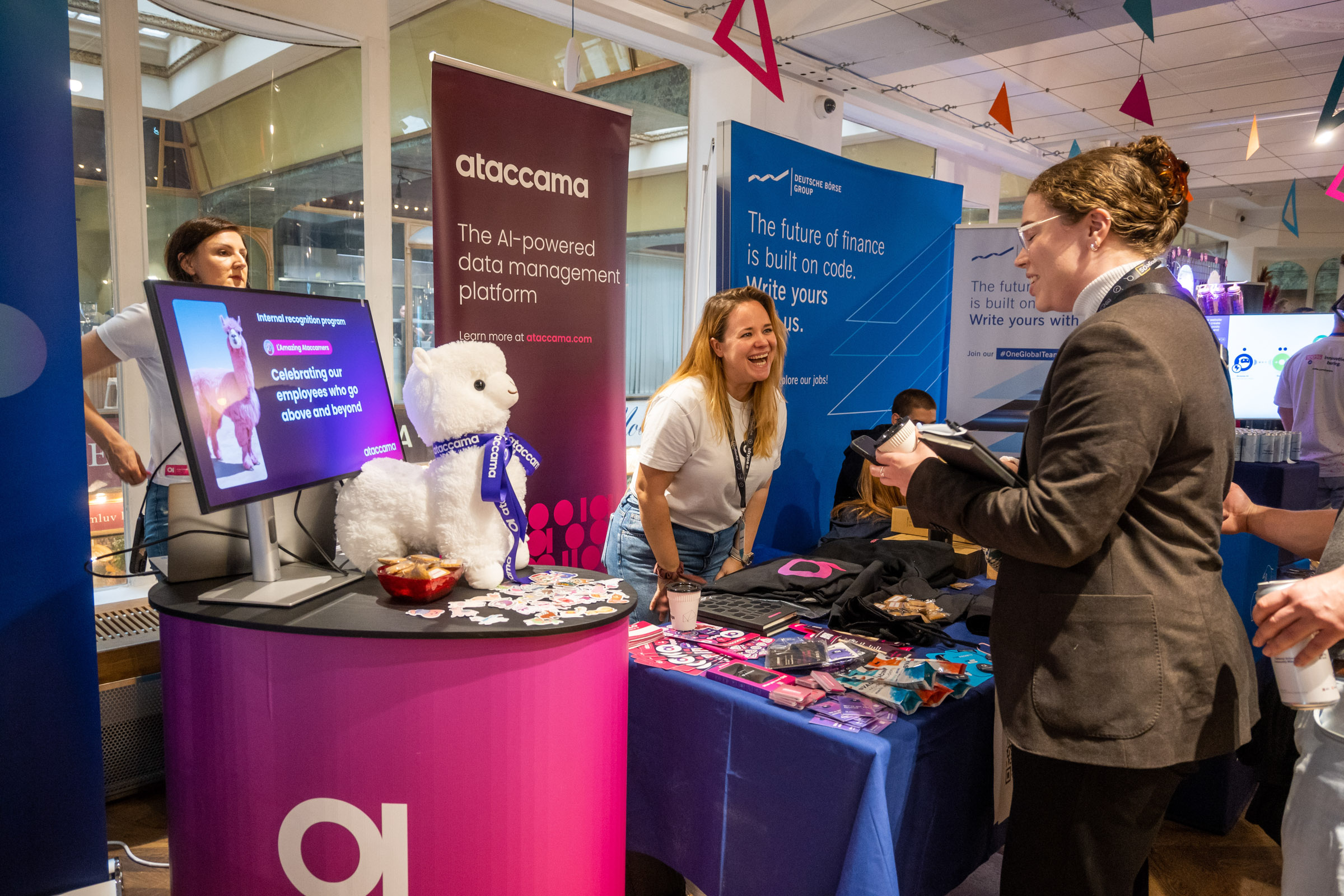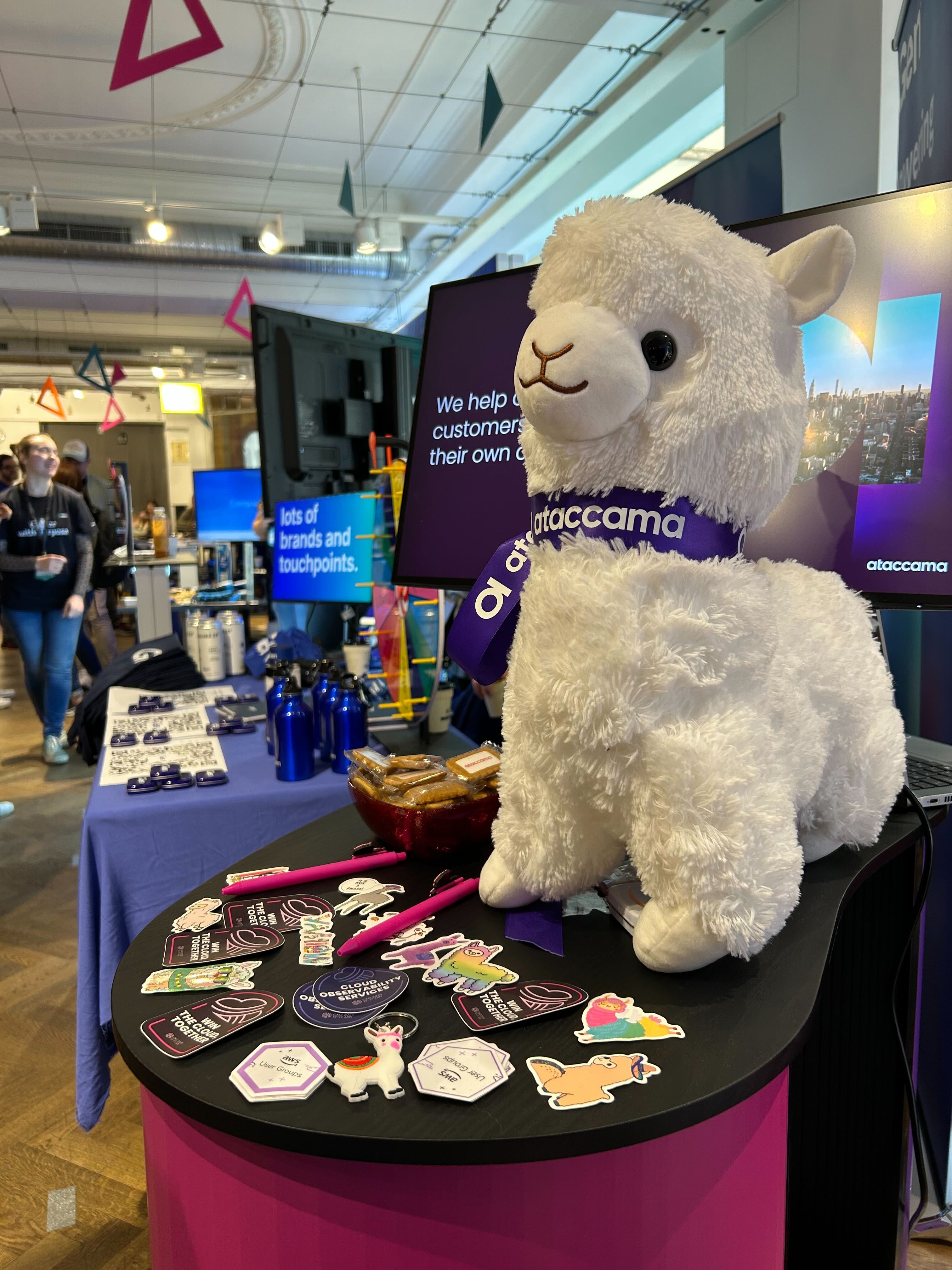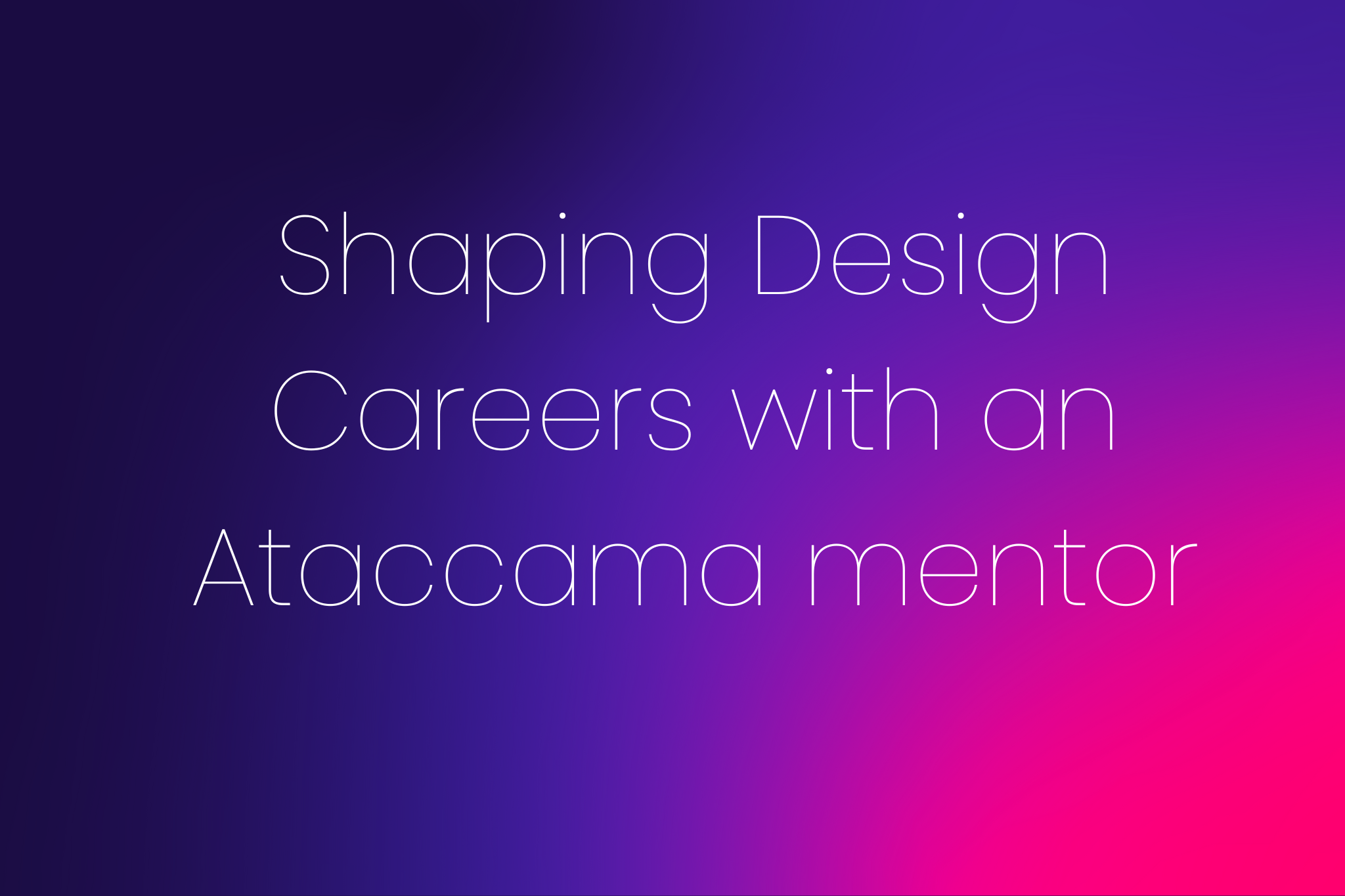With over 1,600 attendees including developers, designers, product managers, and marketers, WebExpo offers an incredible platform to build meaningful connections, showcase our design and tech leadership, and represent the Ataccama spirit at our bustling booth. 
Ataccama’s pink booth became a vibrant hub of activity, where conversations - often sparked by our beloved mascot, the Llama—broke the ice and brought people together to create new connections. We engaged with a diverse crowd, especially product designers and UX researchers, exchanging ideas, inspiration, and stories that went beyond the usual tech talk. For our own colleagues, developers, designers, and other experts attending the conference, it was an invaluable chance to network, absorb fresh perspectives, and stay on top of industry trends.
Let’s hear from Jakub Rybar, Senior Product Designer, who represented Ataccama as an official WebExpo mentor, and learn more about his experience at the conference, as well as his expertise.
I had the opportunity to speak with many open, self-aware, and humble designers (from juniors to seniors) who brought thoughtful questions and a strong desire to grow. Many were facing challenges like unclear expectations in senior roles, low confidence, lack of mentorship, and limited opportunities to develop their skills. I shared guidance on stepping into senior roles with confidence and collaboration, improving communication (check out the notes from one of the mentees), and embracing self-driven growth. A standout moment was when one of the mentees said: “I heard Ataccama is an amazing place to work. Tell me why,” while considering a job change. I was glad to share what makes Ataccama special for both employees and customers. It was a truly rewarding experience.
How do you recommend designers stay up to date with design trends in a landscape shaped by rapidly evolving technology and user expectations?Stay plugged into the design and product community. Attend meetups, follow thought leaders on social media, and track what tech companies like OpenAI, Apple, Google, or Figma are exploring. Look for inspiration in what others are building and experimenting with.
Make time to experiment yourself. Play with new tools, especially AI. Firsthand exploration helps you understand what’s possible and discover what’s truly useful for your users and business.
Finally, don’t just follow trends—understand their purpose. Ask: "What value does it bring to users?” Interfaces today are becoming increasingly adaptive and context-aware, delivering personalized content, predictive prompts, and dynamic layouts based on user behavior. Apple’s Liquid Glass reintroduces skeuomorphic elements to support progressive disclosure, reducing cognitive load. Google’s latest Material Design brings back emotional expression. Focus on the underlying principles, not just the visuals. Apply them with the intent to create real user and business value.
What practical advice did you share with UX job seekers at WebExpo—especially around portfolio building and interview preparation—from your perspective as an expert in the field?A design portfolio is a must-have. Focus on outcomes, how your work impacted users and the business. Don’t just sell yourself; let your work and its impact speak. Keep the layout clean, but more importantly, tell a clear story: What problem were you solving? Why did it matter? How did you approach it? Walk through your process, collaboration, decisions, outcomes and even the challenges. Just be honest. Share the reality, including all the obstacles. There’s no such thing as a perfect, by-the-book project.
Show only the work that reflects what you want to do next. Make your message clear: Who are you, and how can you help the company? Highlight your unique perspective—whether it’s your background, skill set, or domain expertise.
For interviews, preparation is key. Learn about the company, try their product, and be ready to talk through your process including trade-offs, mistakes, and lessons. Share who you are beyond work—your interests, side projects, values, and what excites you in design. Culture fit matters.
And above all: practice. Clear communication often matters more than a perfect portfolio. Treat the interview as a conversation. Be curious, be authentic, ask questions, and look for alignment, not just approval.
When mentoring at WebExpo, how did you guide designers looking to future-proof their careers in light of AI-powered design tools?AI is transforming how we design—but not what makes a great designer. I encouraged others to experiment with AI tools early and often to understand their strengths and limitations. Train your AI muscle. Use AI to speed up research, ideation, prototyping, and content creation. Get hands-on with AI prototyping and vibe coding tools.
At the same time, invest deeply in distinctly human skills: empathy, visual taste, strategic thinking, facilitation, and communication. These capabilities become more valuable as AI handles routine tasks. Treat AI as your design partner. Integrate it into your workflow to amplify your thinking while maintaining creative control and final judgment.
Most importantly, stay curious and adaptable. Tools will continue evolving, but your ability to understand people, solve complex problems, and guide strategic decisions will always be essential.
In your profile as a mentor, you highlight the importance of collaboration. How do you coach UX professionals to effectively bridge the gap between design, tech, and business stakeholders?Instead of waiting for requirements, I encourage designers to collaborate proactively within a product trio, alongside PMs and engineers. This means involving them from the start: doing research together, framing problems as a team, running ideation sessions, and sharing work early to get feedback.
When teams co-create, ideas are stronger and alignment comes naturally. I also emphasize the importance of connecting design decisions to business outcomes and understanding each stakeholder’s goals and language.
This approach builds shared ownership, surfaces technical constraints early, and reduces misalignment. Good collaboration isn’t just about working together—it’s about solving the right problems together.
How is Ataccama designing an AI Agent for our platform? What are the biggest design challenges?Ataccama is a very progressive company in terms of using AI both for internal purposes and in our products. We're designing an AI agent for our data management platform, used by enterprise customers in industries like pharma, banking, telecom, and insurance. Instead of clicking through screens, users now interact naturally with the agent to get things done. It performs complex tasks to save time and boost productivity, allowing users to focus on their goals, not the interface.
This shift is transforming how we design. We're no longer building static UIs. We're creating intelligent, outcome-driven experiences that understand user intent and respond accordingly. The design process centers on deep user understanding and rethinking traditional design principles.
The biggest challenge is building trust and transparency. Users need to understand what the agent is doing, why it’s doing it, and feel fully in control. It’s an exciting time to reshape enterprise UX through AI
Check our openings at our website.

